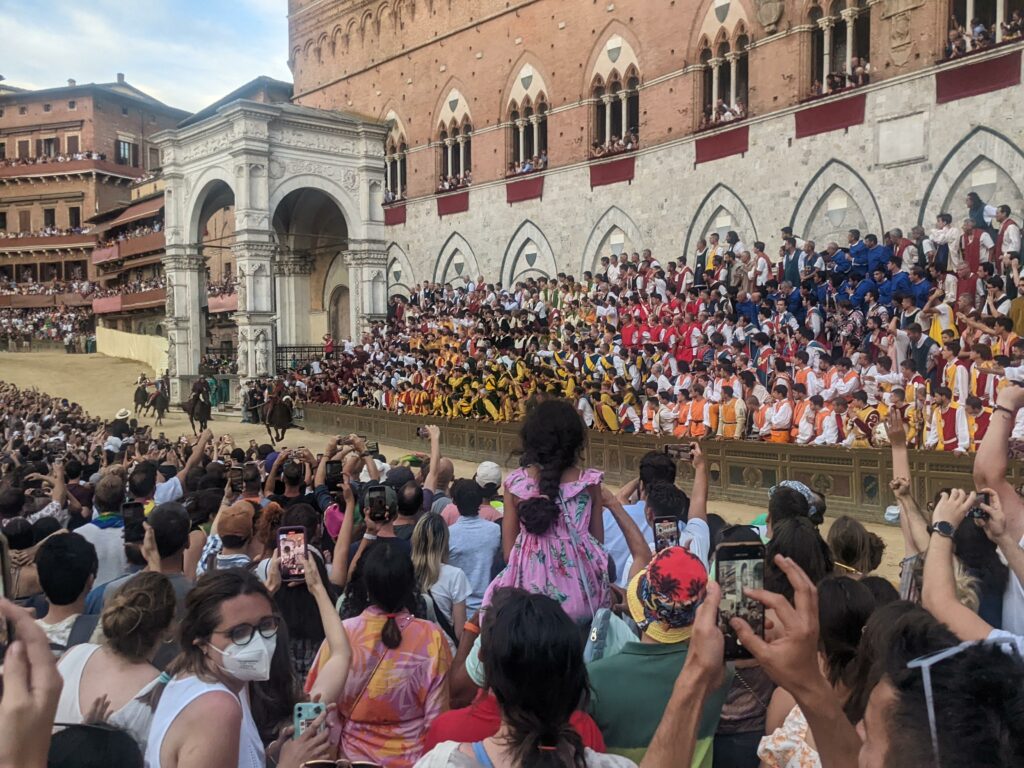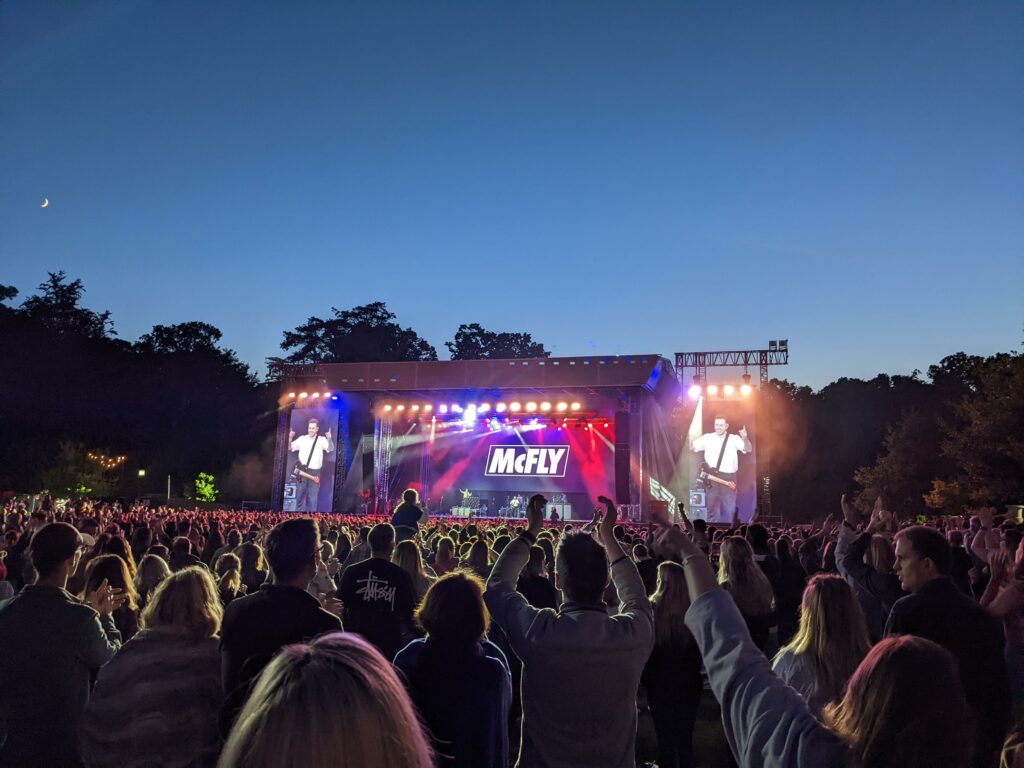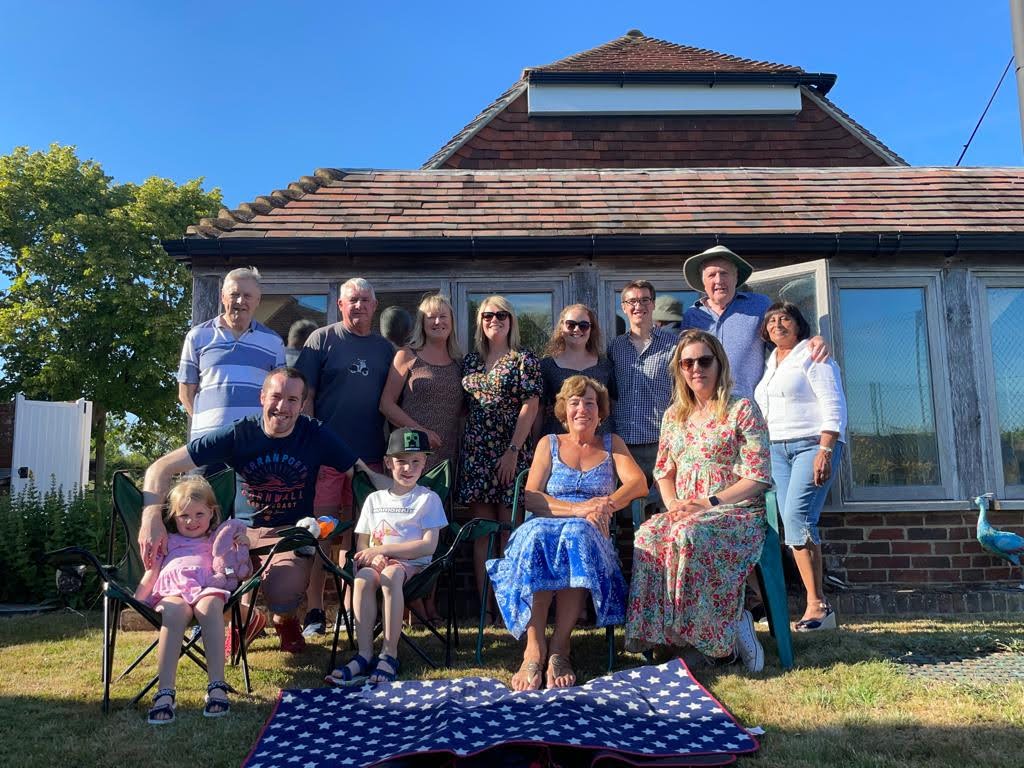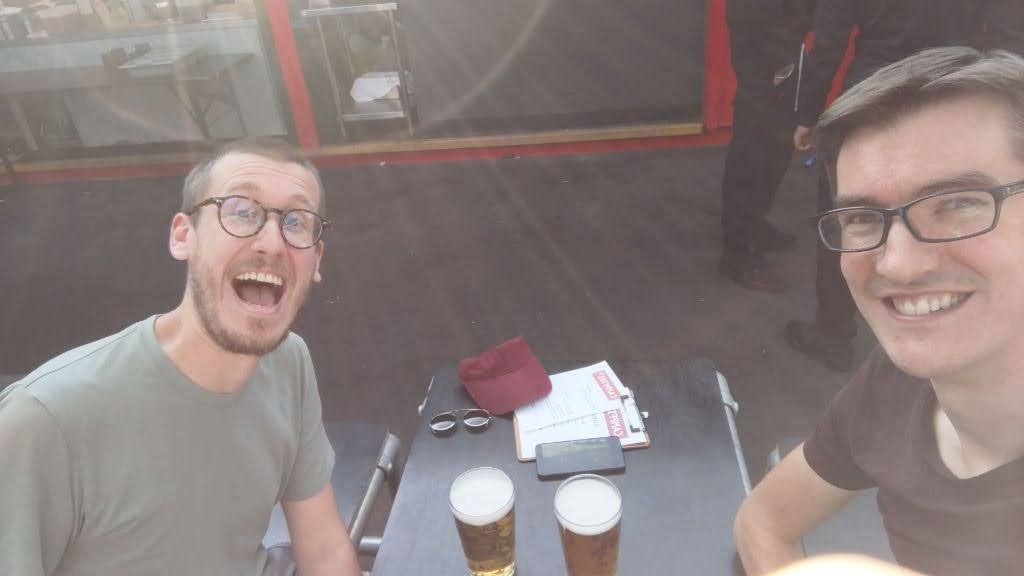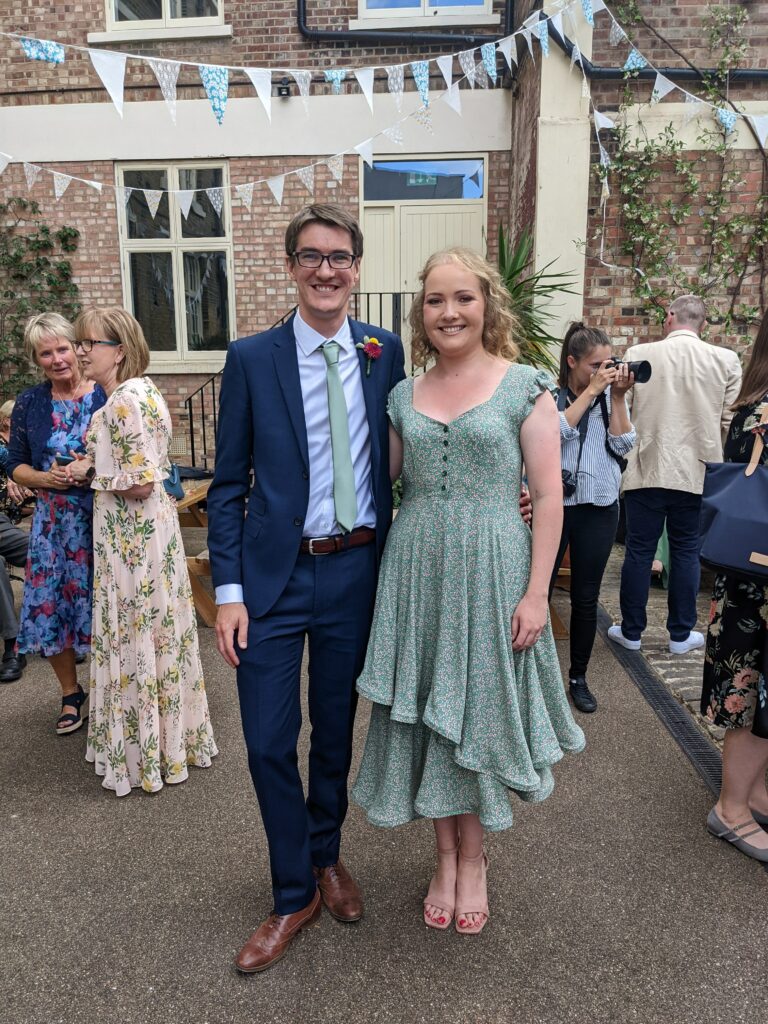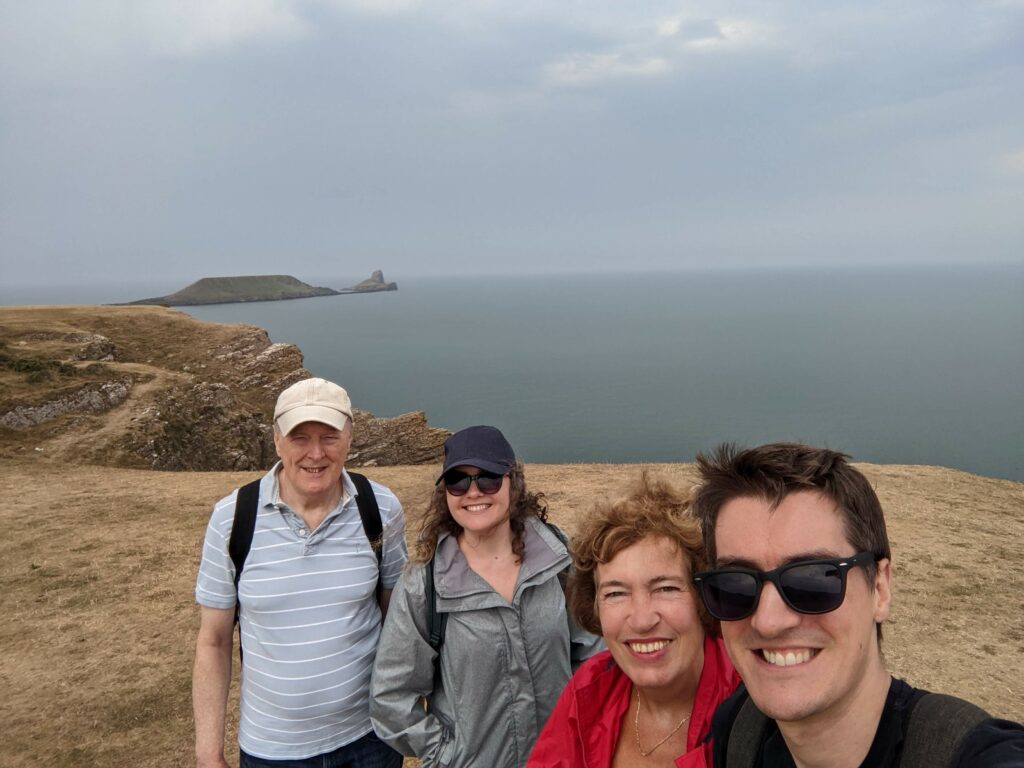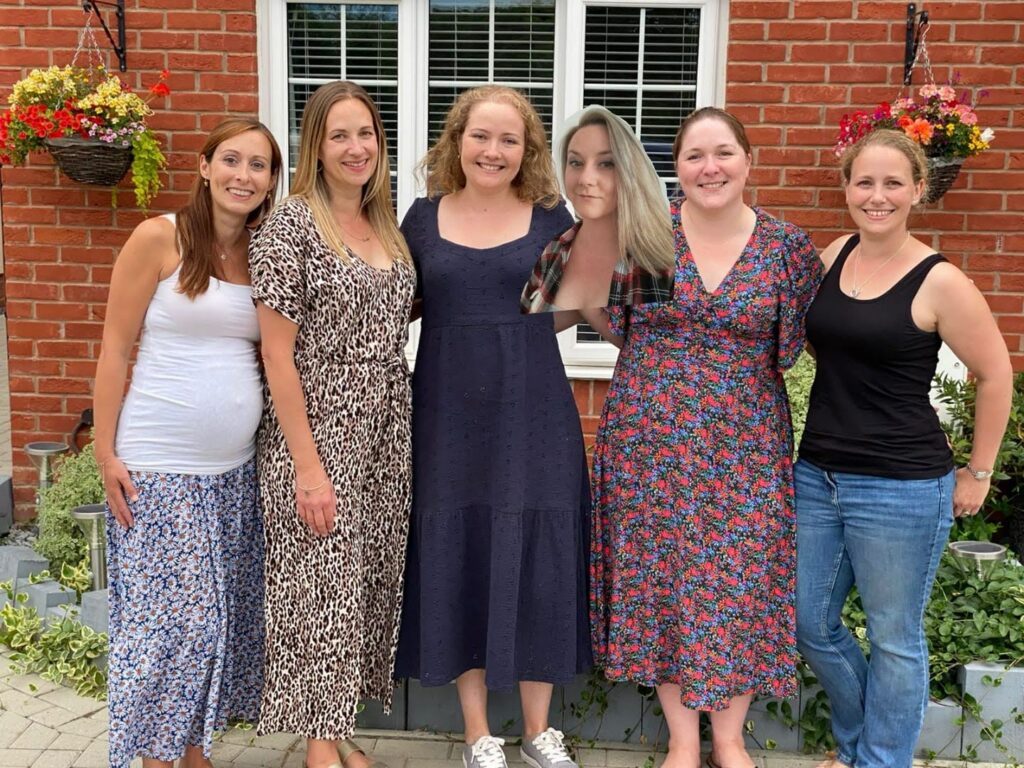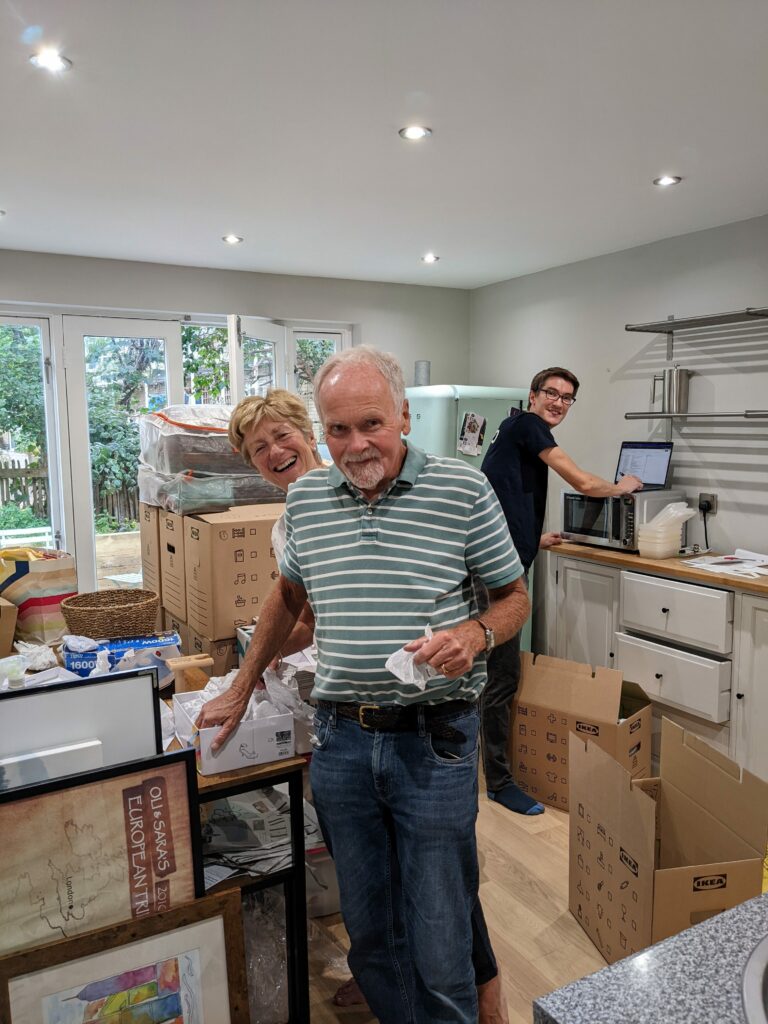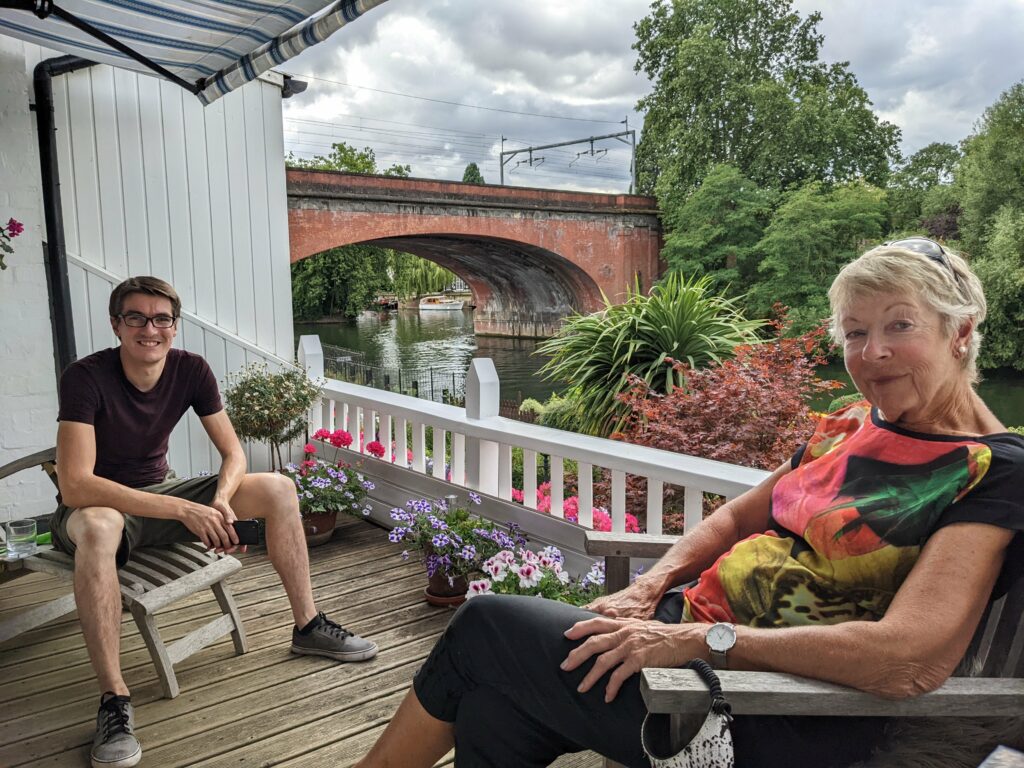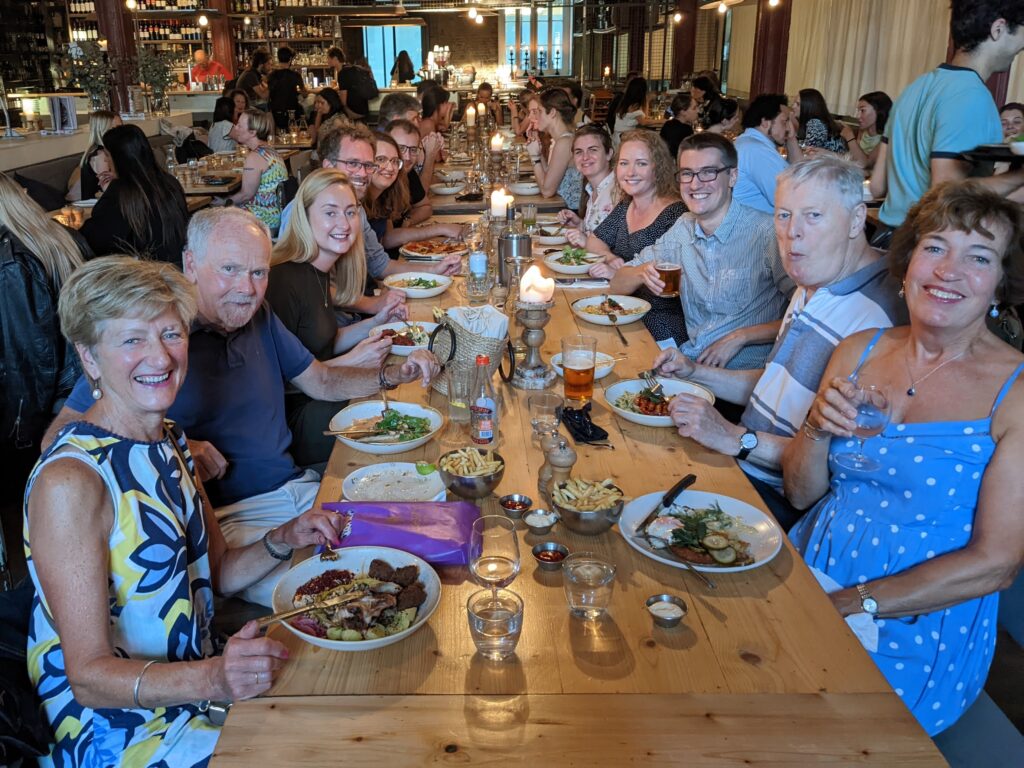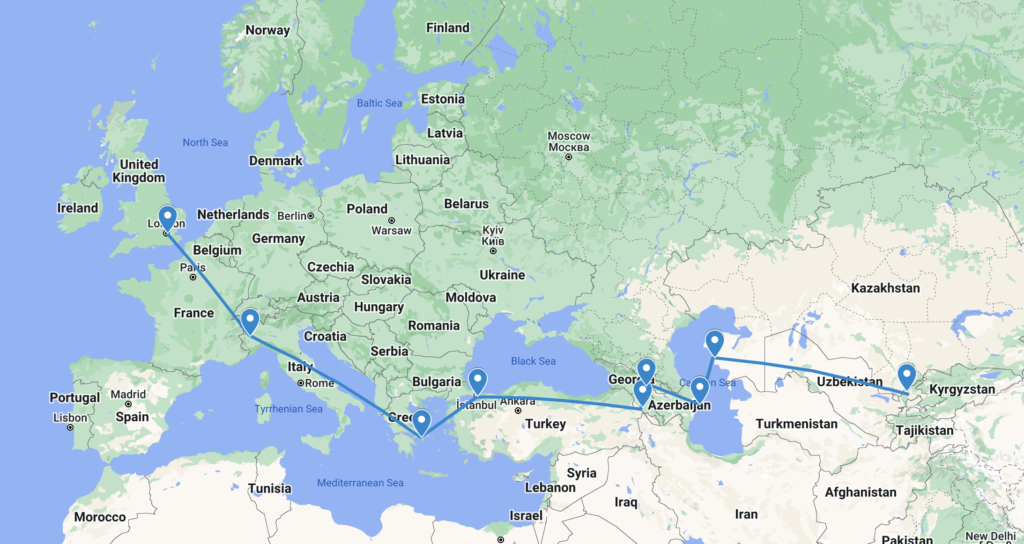While our 2010 carbon audit taught us that we’ll need to embrace travelling slowly in order to minimise our carbon footprint, we were also keen to start our trip with a bang. “Breakfast in London, lunch in Paris, and dinner in Turin” sounded pretty exciting, and we loved the idea of beginning the trip in Italy. However, the reality was that this would require a 5.30am start, 10 hours spent on trains, and nearly £250 spent on train tickets. Still, we decided to go for it, with the promise to ourselves that we’d slow down once we arrived in Italy.
Following our Eurostar from London to Paris, we needed to cross Paris to catch our onward train to Turin. We’d had an early start, but I was feeling a lot fresher following a three-hour nap on the Eurostar, so we opted to make the five-kilometre connection from Gare du Nord to Gare de Lyon on foot. We emerged into beautiful Parisian sunshine, and stopped almost immediately in Jardin Villemin for lunch and to open a few cards from our friends that we’d saved for the journey – thanks Amy, George & Erin 🥲 Five kilometres might not sound like a long way, but it certainly felt like it in the 34 degree midday heat and with our freshly packed bags! However, we enjoyed admiring the slowly changing architecture and street art along the way.



Our Frecciarossa high-speed train flew through France en route to Lyon, but then slowed significantly for the final third of the journey through the Alps. Finally, six hours and a couple of naps later, we arrived in Turin. We picked up a late-night pizza and called it a night.
We didn’t need our alarms the next morning, as we were awoken by some refurbishment of the room opposite – maybe that’s why I’d managed to get such a good rate on the reservation?! To make up for this, I headed out to collect some breakfast and coffee while Sara slept, and then together we left to spend the morning exploring Turin.
Our route to Piazza Castello took us along Via Pietro Micca, where we loved the blend of Parisian and Viennese architecture, as well as the mix of old and new trams.



We enjoyed a sandwich overlooking Porta Palatina – the red brick remains of a Roman-era gate – before hopping between shaded areas as we navigated Giardini Reali. The first half of our stay in Turin ended with a quick walk back to the hotel to grab our bags in order to jump on the 14:34 train to Aosta – a bilingual city in nestled in the Italian Alps. I say jumped because we nearly missed the train altogether. In fact, I’d only discovered the train had stopped further down the platform when Sara sent me to validate our tickets!



Overall, our route from London to Turin by train and on foot certainly took longer than a flight. However, it did save 136 kilograms of Carbon Dioxide Equivalent (kgCO2e). Not bad!
